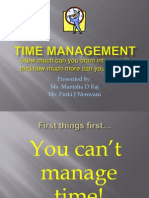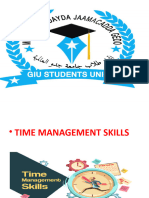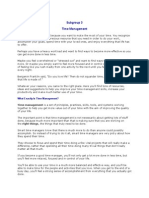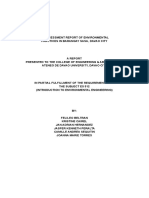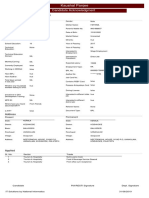0% found this document useful (0 votes)
26 views3 pagesTime Management: Study Presentation Script
This document presents strategies for effective time management to enhance productivity and achieve desired outcomes. Key strategies include identifying core priorities, managing distractions, planning and scheduling tasks, avoiding multitasking, combating procrastination with SMART goals, and maintaining work-life balance. The techniques are designed not only for personal improvement but also to encourage sharing and fostering connections with others.
Uploaded by
realcantaraCopyright
© © All Rights Reserved
We take content rights seriously. If you suspect this is your content, claim it here.
Available Formats
Download as PDF, TXT or read online on Scribd
0% found this document useful (0 votes)
26 views3 pagesTime Management: Study Presentation Script
This document presents strategies for effective time management to enhance productivity and achieve desired outcomes. Key strategies include identifying core priorities, managing distractions, planning and scheduling tasks, avoiding multitasking, combating procrastination with SMART goals, and maintaining work-life balance. The techniques are designed not only for personal improvement but also to encourage sharing and fostering connections with others.
Uploaded by
realcantaraCopyright
© © All Rights Reserved
We take content rights seriously. If you suspect this is your content, claim it here.
Available Formats
Download as PDF, TXT or read online on Scribd
/ 3











